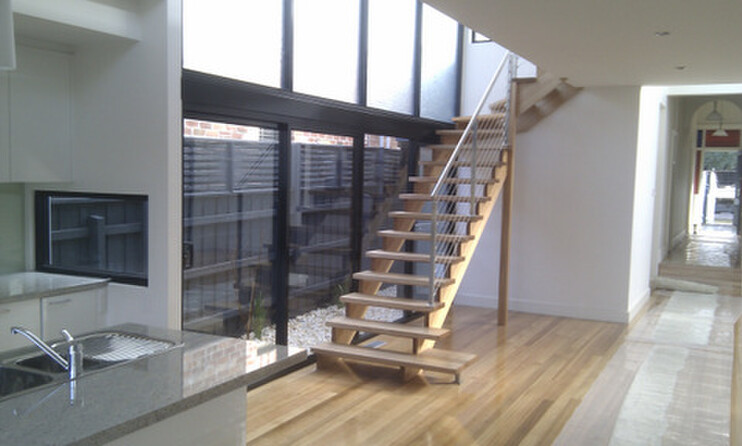Podcast: Play in new window | Download | Embed
Dean Hoggart found geology fascinating. He followed this passion hoping for a career in geothermal energy. After becoming a successful geotechnical engineer and drilling holes looking for oil and minerals, Dean realised he wasn’t really doing what he’d like to be doing. So he took a leap and changed career. Today, he’s a Certified Passive House Designer and is very happy to be applying science to the design of energy efficient homes.
Earth and Energy
Dean got into geotechnical engineering with a hope of getting into geothermal energy. At the time geothermal was being touted as an alternative to baseload energy generation in Australia.
He soon found himself drilling holes in Australia and Papua New Guinea for a petrolleum company. Dean still saw this as a means to end. Learning more about the earth beneath our feet is theoretically good experience for a career in geothermal energy.
But it became clear to Dean that the promise of geothermal was being overtaken by more promising technologies such as solar power.
He says it took him a while but eventually, Dean realised that what he’d achieved, wasn’t really what he wanted.

Back to the Drawing Board
When Dean was a teenager he read an Australian book on Earth Covered Building. This has stuck with him enough to consider architecture and design when he was contemplating a career change.
“Designing and the way people live in houses has been something that I scribble on the back of paper for ever, it just took me a long time to decide that that’s what I wanted to do for work,” says Dean.
Passive House
Dean’s first impressions of Passive House was, “what a ridiculous system”. The thought of being sealed in a house and having to rely on a mechanical ventilation system seemed crazy. But seeking answers about passive solar and thermal mass eventually led Dean to Passive House.

After going back to school to study design, he sought to answer the question of how to quantify the amount of thermal mass required to affect internal temperature. He was essentially seeking scientific answers to the fundamental assumptions of passive solar design. How much thermal mass do you need? Are there enough windows, and are they in the right place?
Dean didn’t like the answer he was given by his tutors which was essentially to try a few houses designs and eventually figure out what works and what doesn’t. Coming from an engineering background and wanting scientific rigour, this was not convincing for Dean.
Dean believes that some of the principles of passive solar are an integral part of Passive House, mostly with regard to using the sun as the source of heat. But he’s wary of relying so much on thermal mass.
With Passive House, Dean now has a way to answer those questions he was asking his tutors. “Model it” is the answer, using the Passive House Planning Package, PHPP.
Homeworks Design
Dean Hoggart is now a Certified Passive House Designer at Homeworks Design in Melbourne, Victoria.



Leave a Reply